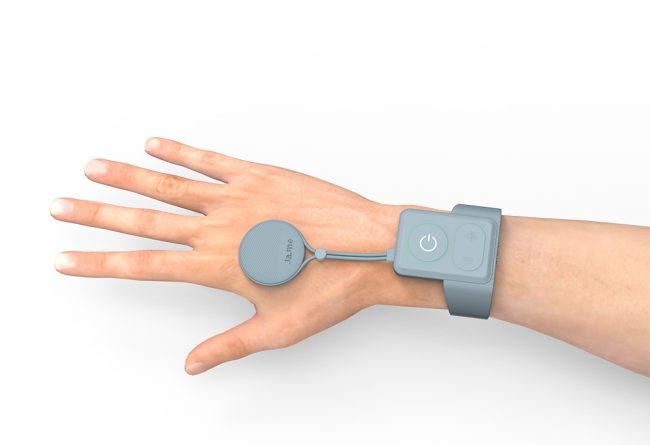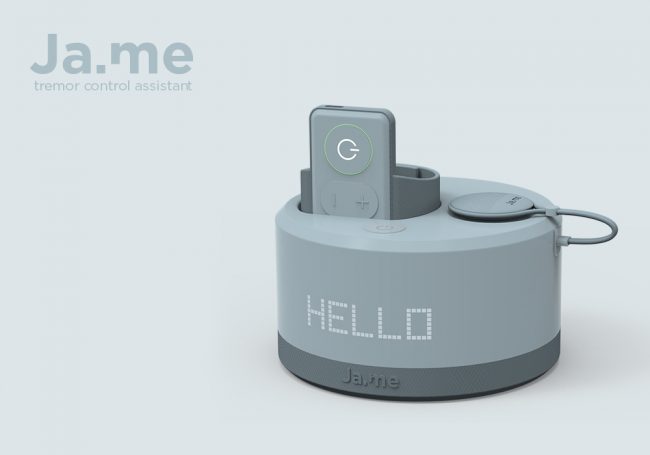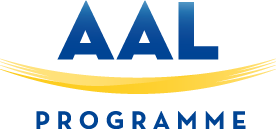AAL Project JAME team wins European Product Design Award!
The AAL Programme congratulates its Call 2019 project JAME team that has worked hard on creating a tremor control assistant, and has been just awarded a European Product Design Award in the category Design for Society/Design for Elders! The AAL Programme has talked with the JAME project coordinator Sara Marceglia and asked more about their journey with JAME.

Can you explain very briefly what your solution is and the benefits it offers?
The idea is to have a wearable technology that can be worn by the patient who suffers from hand tremor all day long that both collects data about the patient’s disease and, when needed, it delivers a non-invasive and personalized electrical stimulation to control tremor. This could bring a great improvement in terms of disease management and quality of life.
Could you tell us more about your recent success and journey to winning the European Product Design Award?
The ePDA, the European Product Design AwardTM, is one of the most prestigious accolades for a product and/or industrial designer around the world. It recognizes the efforts of talented designers who aim to improve our daily lives with their practical, well-thought-out creations. We signed up in Spring 2021 in the category Design for Society/Design for Elders, being Jame targeted for elders aging with chronic neurodegenerative diseases. We received the news about the winning on 1st September 2021, such a great way to end the summertime and start all the new activities with a lot of enthusiasm!
The idea behind Jame, that to us is its most important feature, is that combining biomedical technology with design principle could be a win-win approach to provide effective but non-stigmatizing devices able to help patients coping with their disease. We have worked in a multidisciplinary team involving engineers, designers, clinicians, and patients’ associations that allowed us to achieve our success in the ePDA.
What challenges did you face when developing the product and how did you overcome these?
Jame was developed during the pandemic emergency that hardly hit Europe in March 2020, so the main challenges we faced regarding social distancing inside the working team and impossibility to meet patients or their caregivers to complete some fundamental expected activities as understanding patients’ attitudes about Jame and carrying out the clinical trial to optimize stimulation parameters. We overcame this situation by totally changing the plan of the scheduled activities and introducing new ones to be developed during the lockdown, in remote working. Thanks to this flexibility, we were able to achieve our goals and also to test the technology on patients. Now the work is not ended and we will continue interacting with patients and caregivers to finalize the product development.

Apart from the funding, how did being an AAL project impacted the development of JAME?
AAL supported us in each phase of the project (e.g., they have a very efficient network and helped us to cover the ineligibility of a partner), having easy access to officers, rapid responses and an overall good organization at the central level; moreover, they suggested us many tools available to help us carrying out the project in the best possible way and organized interesting webinars to learn fundamental topics in project management and valorization.
In particular, AAL2Business helped us in understanding better our capabilities, in terms of market and of our possible customers. During the workshops, we gained knowledge about tools, the Lean Canvas (which is probably the most known), but also the Value Proposition Canvas and the Javeline Board that allowed us to start thinking in directions we did not consider before. We also took advantage of the private online sessions in which we could interact and make specific questions to an expert about our project, receiving important and constructive critics.
What are your plans for JAME in the nearer and further future?
In the nearer future we plan to end the pilot feasibility interventional study we are conducting, to have strong evidence of the rationale behind the functioning. Considering our present results, we plan a time-to-market of 3 years that will include the development of a finalized JAME device, with essential requirements testing and clinical data on efficacy and usability, and the CE mark process under the new MDR. We strongly hope to win AAL Call 2021 because the Consortium strongly believes in the Jame idea, and plans to continue with its activities, until Jame will be ready for patient’s use.

